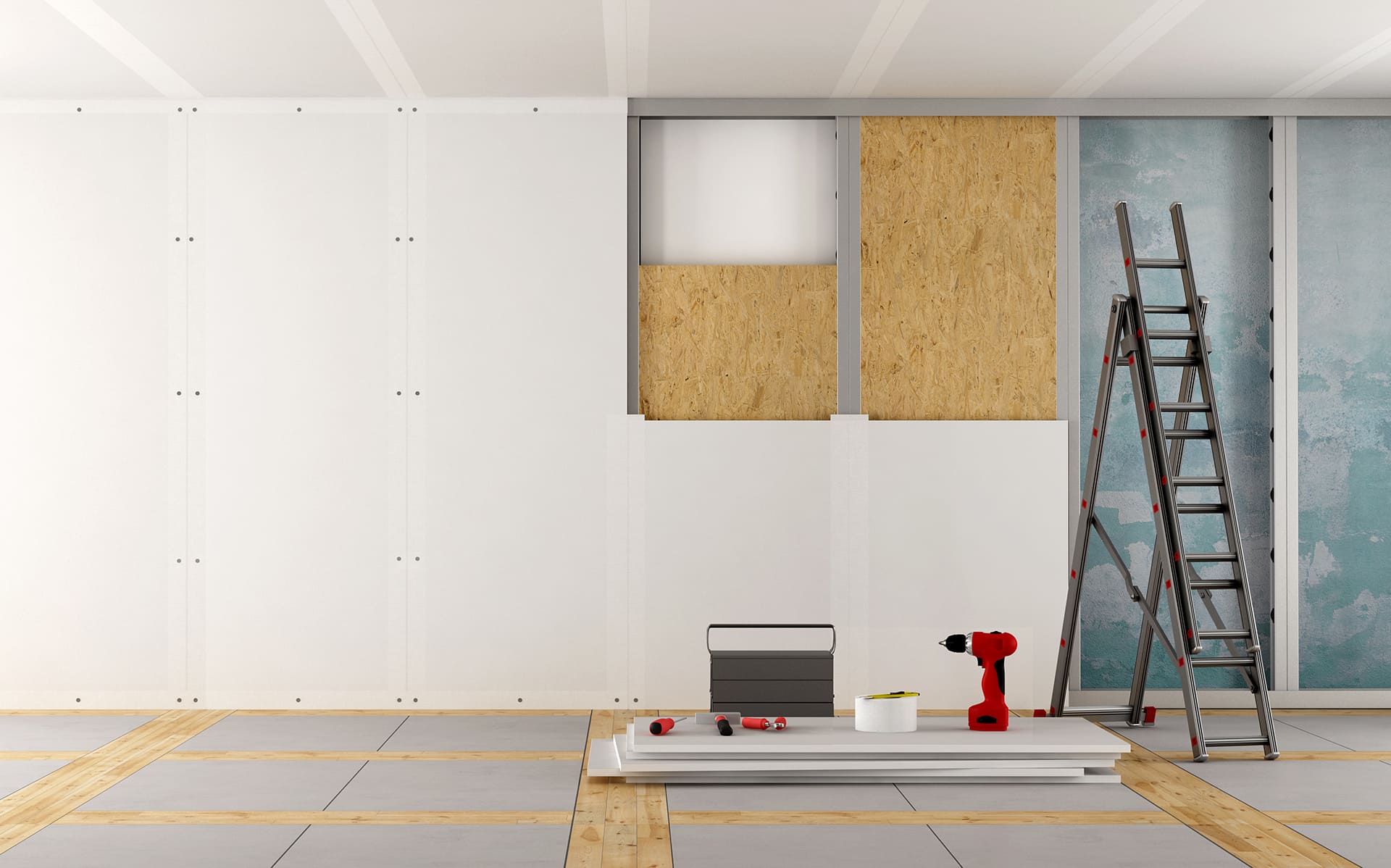Finding the right gypsum board thickness can make or break your project's safety and performance. Many builders underestimate how thickness affects fire ratings and structural integrity.
The thickest standard gypsum board is typically 15mm, though specialty applications can go up to 16mm. Most construction projects use boards ranging from 9mm to 16mm depending on performance requirements.

After building my factory and working with architects worldwide, I learned that thickness is just one piece of the performance puzzle. Let me explain what really matters for your project success.
How Thick Should Gypsum Board Be for Your Specific Application?
Choosing the wrong thickness costs time and money. Each application has specific requirements that determine optimal board thickness for safety and performance.
Gypsum board thickness should match your application: 9-16mm for residential walls, 15mm for commercial spaces requiring impact resistance, and 20-25mm for high-performance fire ratings or heavy-duty applications.

Understanding the Science Behind Thickness Selection
Most people think thicker always means better. This thinking wastes money and creates unnecessary complications. During my early manufacturing days, I watched contractors struggle with 16mm boards where 12mm would work perfectly.
Thickness serves three primary functions: structural strength, fire performance, and acoustic control. Each function requires different material science approaches. Structural strength comes from gypsum density and paper face quality. Fire performance depends on crystalline water content and chemical additives. Acoustic control involves mass and air cavity design.
Residential applications typically need 9.5mm or 12mm boards. These thicknesses provide adequate strength for normal wall and ceiling loads. The lighter weight makes installation faster and reduces structural stress on framing. Cost savings are significant when you multiply across entire projects.
Commercial spaces often require 15mm boards for impact resistance. Schools, hospitals, and office buildings face higher traffic and potential damage. The extra thickness provides better dent resistance and longer service life. Fire codes may also mandate thicker boards in certain occupancy types.
Industrial and specialty applications can require 20mm or 25mm boards. These projects prioritize performance over cost. Heavy machinery vibration, extreme temperature swings, or specialized fire ratings drive the thickness requirements.
| Application Type | Recommended Thickness | Primary Benefits |
|---|---|---|
| Residential walls | 9.5-12mm | Cost effective, easy installation |
| Commercial walls | 15mm | Impact resistance, durability |
What's the Difference Between Gypsum Board and Drywall?
This confusion causes specification errors and communication problems on job sites. Understanding the distinction helps you choose the right product and communicate clearly with suppliers.
Gypsum board is the manufactured product made from gypsum core with paper facings, while drywall refers to the complete wall system including boards, joint treatment, and finishing that creates a dry construction method.

Why the Distinction Matters for Performance and Specification
The terminology difference reflects a deeper understanding of building systems. When I started manufacturing, customers would ask for "drywall" but really needed specific gypsum board products. This confusion led to wrong specifications and project delays.
Gypsum board is the component - the actual manufactured panel with specific thickness, fire rating, and performance characteristics. You specify gypsum board when you need precise technical requirements. Fire-rated gypsum board, moisture-resistant gypsum board, or impact-resistant gypsum board are component-level specifications.
Drywall represents the construction method and complete system. It includes the gypsum boards, metal or wood framing, joint compound, tape, fasteners, and finishing techniques. When architects specify "drywall construction," they mean the entire assembly method.
This distinction affects purchasing, installation, and performance expectations. Gypsum board manufacturers focus on material science - crystal structure, additives, paper quality, and dimensional accuracy. Drywall contractors focus on system performance - joint quality, fastener patterns, finish levels, and installation speed.
Regional usage varies significantly. North American markets commonly use "drywall" for both the product and system. European and Asian markets typically maintain the distinction between gypsum board products and dry construction methods. Understanding your market's terminology prevents specification errors.
The performance implications are real. When you specify gypsum board, you get measurable material properties. When you specify drywall system performance, you get assembly-level results that depend on installation quality, joint treatment, and system integration.
How Thick is 2 Hour Fire Rated Drywall for Code Compliance?
Fire ratings determine life safety in buildings. Getting the thickness wrong can result in code violations, failed inspections, and dangerous conditions for occupants.
Two-hour fire rated drywall typically uses 15.9mm (5/8 inch) Type X gypsum board in single-layer applications, or 12.7mm (1/2 inch) boards in double-layer systems, depending on the specific assembly design and testing.

The Engineering Behind Fire-Rated Thickness Requirements
Fire ratings depend on complete assembly performance, not just board thickness. I learned this lesson when a client assumed thicker boards automatically provided better fire ratings. The testing results proved thickness alone does not determine fire performance.
Fire-rated gypsum boards contain crystalline water within the gypsum core. When exposed to fire, this water converts to steam and absorbs heat energy. The process slows temperature rise on the unexposed side of the wall or ceiling assembly. More crystalline water generally means longer fire resistance.
Type X gypsum board contains special additives that enhance fire performance beyond standard gypsum boards of the same thickness. Glass fibers and other materials help maintain structural integrity as temperatures rise. The paper facings also receive fire-resistant treatments.
Single-layer systems typically use 15.9mm Type X boards for 1-hour ratings and specialized formulations for 2-hour performance. The thicker core provides more material to absorb heat and maintain structural properties longer. Installation details like joint treatment and fastener patterns affect the final rating.
Double-layer systems can achieve 2-hour ratings using thinner individual boards. Two layers of 12.7mm Type X boards often provide equivalent or superior performance compared to single 20mm boards. The air gap between layers adds insulation value and structural redundancy.
Assembly testing determines the actual fire rating. Underwriters Laboratories and other testing agencies evaluate complete wall or ceiling systems including framing, insulation, electrical penetrations, and finishing details. The gypsum board thickness is just one component in the tested assembly.
Building codes reference specific tested assemblies rather than generic thickness requirements. Always verify your local code requirements and specify tested assemblies that match your project conditions.
Conclusion
Gypsum board thickness serves specific performance functions rather than following "thicker is better" logic, requiring careful matching of material specifications to application requirements and building codes.
